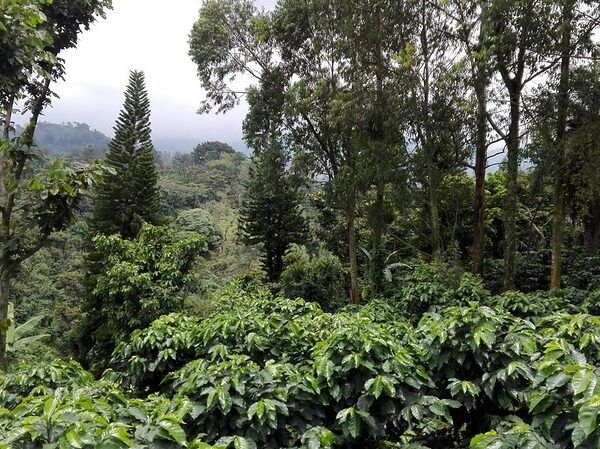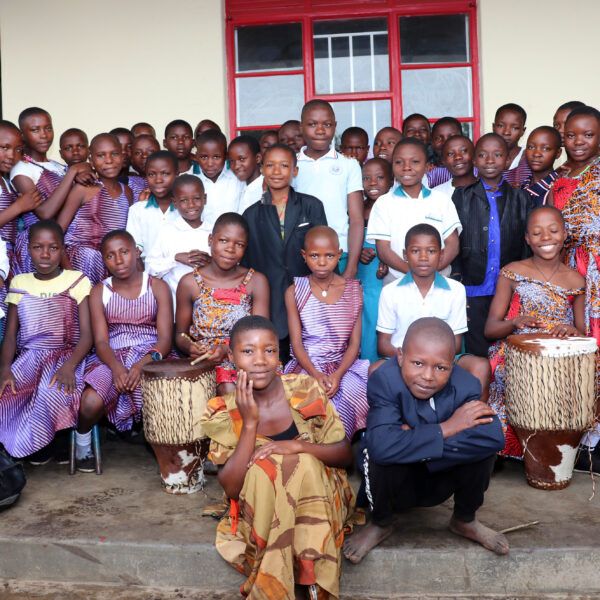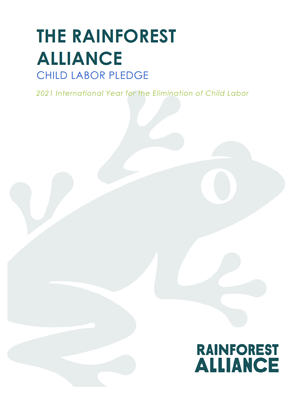It Takes a Global Village to Tackle Child Labor on Farms
We can all play a crucial role to ensure that all children grow up in dignity. So, who’s with us?
Home / Issues / Human rights / Child labor / Page 6
Some of world’s most traded goods—coffee, chocolate, tea, bananas, palm oil, and timber products—have human rights abuses, like child labor, embedded in their supply chains. In fact, the majority of children engaged in child labor worldwide—71 percent—are found in the agricultural sector.
There is no place in responsible business practices for child labor and other human rights violations. That’s why our 2020 Certification Program is shifting to an “Assess-and-address” approach, which goes much further than a simple prohibition approach in its ability to drive change on human rights. This risk-based approach focuses on prevention, collaboration, and improvement. It incentivizes farmers to tackle the root causes of child labor in collaboration with their supply chain, local government, and civil society, rather than hide it.
To further support farmers in their due diligence journey to prevent, monitor, and remediate the issue, we have developed a child labor toolkit. This step-by-step guide helps farms, businesses, and others to implement child labor due diligence, including risk assessments, mitigation actions, remediation, monitoring, engaging with children safely, and context behind legislation.
We call on you to take action to tackle child labor in your supply chain. Please contact us with additional questions.
Our comprehensive child labor toolkit offers step-by-step modules to assess, mitigate, monitor and remediate child labor in agricultural settings.
Read our position paper to learn how we tackle child labor in agricultural supply chains and rural communities.
Download this one-sheet on integrating our assess-and-address approach with CLMRS and Child-Labor Free Zones.
Learn more about our community approach to addressing child labor in Turkey.

We can all play a crucial role to ensure that all children grow up in dignity. So, who’s with us?

Our assess-and-address approach focuses on prevention, engagement, and improvement of human rights issues, and incentivizes farmers and companies to tackle human rights issues rather than hide them.

For the Rainforest Alliance’s Claudia Medrano, preventing child labor in Guatemala’s coffee landscapes is personal

With the overarching goal of reducing child labor within coffee-farming communities, this project aims to create specific impacts within the partner communities—generating insights for other stakeholders to follow within their own contexts

The assess-and-address pledge can be used by the Certificate Holder to publicly inform workers/ group members of its commitment to prevent and remediate human rights violations. This is an editable version so that the text can be adjusted to fit the Certificate Holder’s needs and context best. This can then be printed and visually displayed […]

Between 2014 and 2020 a consortium of organizations, including Rainforest Alliance, implemented a “Child Labor Free Zone” (CLFZ) program in the West Nile province of Uganda. This is a coffee growing region with a high incidence of child work and child labor. CLFZ uses a holistic approach on child labor and child work in addressing […]

This document explains the method used to create the Rainforest Alliance’s risk maps on child labor and forced labor and provides an overview of how the indices per country and sector were calculated.

To mark the 2021 International Year for the Elimination of Child Labor, the Rainforest Alliance is pledging to achieve the following objectives—each one contributing towards the eradication of child labor by 2025 in the sectors we work in.

152 million children worldwide are engaged in child labor. The vast majority (71 percent) work in the agricultural sector—performing tasks that can be dangerous and exhausting. While great strides have been made in recent years, more needs to be done to ensure the root causes of child labor are being tackled in an effective and […]

This workbook contains easy-to-use forms to support implementation of the actions to tackle child labor including stakeholder analysis, legal assessment, hazardous tasks assessment, risk guidance, management plan, monitoring tools, and remediation plan.